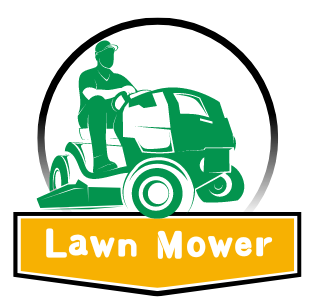Setting the right price for lawn mowing services can be tricky. It’s not just about charging per hour or using a simple formula—there’s more to it. Whether you’re just starting your lawn care business or looking to improve profitability, this article will walk you through how much should you charge to mow a lawn.
Looking for efficient equipment to boost your business? Check out our 9 Best Battery Powered Lawn Mowers for top recommendations
Understanding Lawn Mowing Pricing Basics

What Factors Influence the Cost of Lawn Mowing?
There are several factors to consider when determining how much to charge for lawn mowing:
Yard size: Larger lawns obviously take more time and effort.
Terrain difficulty: Sloped or uneven lawns are more challenging to mow.
Frequency of service: Clients who sign up for regular mowing services might get a discount compared to one-time jobs.
Local market rates: Always check what other lawn care companies in your area are charging.
Additional services: Clients may want extras like trimming, edging, or leaf cleanup, which will raise the price.
Each of these elements contributes to the final cost of your service. By understanding these factors, you can better tailor your pricing to the specific needs of each lawn and client.
The Role of Equipment in Pricing
The type of equipment you use can greatly impact the price you charge. For example, a push mower takes longer to mow a yard compared to a ride-on mower or stand-on mower. While a push mower might take 35 minutes to complete a job, upgrading to a faster, more efficient mower could cut that time down to 20 minutes.
However, just because the job takes less time doesn’t mean you should charge less. After all, you invested in more efficient equipment, and that benefit should reflect in your profit, not in a discount for the customer.
How to Calculate Your Per-Hour Rate for Lawn Mowing
To determine how much you should charge to mow a lawn, you can use this simple formula:
(Price of the lawn) ÷ (Time in minutes ÷ 60) = Per-hour rate
Here’s an example:
Let’s say you charge $50 to mow a lawn, and it takes you 20 minutes. First, divide the minutes by 60:
20 ÷ 60 = 0.333
Then, divide the price by that result:
$50 ÷ 0.333 = $150 per hour
So, you’re effectively earning $150 per hour on that lawn. If you’re working with a crew, divide that amount by the number of workers. For instance, if you have two people on the crew:
$150 ÷ 2 = $75 per hour
This formula helps you see how much you’re making per hour and whether your pricing needs adjustments.
Accounting for Crew Size
If you work with a team, adjust your rate based on how many people are on the job. For a three-person crew, divide the hourly rate by three. This allows you to accurately calculate how much profit each worker brings in, ensuring you’re not undercharging for labor.
The Balance Between Time and Efficiency
Why Pricing Based on Time Can Be Tricky
One of the biggest mistakes lawn care businesses make is charging solely based on time. Let’s say you’ve upgraded your equipment and can now mow a lawn faster. You might be tempted to lower your price since the job takes less time, but this is a missed opportunity for profit. Efficiency should increase your profit margin, not lower your price.
For example, if you used to charge $70 for a lawn that took you 35 minutes to mow, but now you can mow it in 20 minutes with a faster mower, don’t lower your price. Instead, keep that $70 price and capitalize on the increased efficiency.
Here’s the math:
$70 ÷ (20 ÷ 60) = $210 per hour
By maintaining the same price, you’ve increased your hourly rate from $120 to $210 per hour. The client doesn’t need to know how long the job takes—they’re paying for the result, not the time.
Investing in Efficiency: Keeping the Profit
Upgrading your equipment is a business decision that benefits you, not your clients. If you pass all the savings from faster work directly to the customer, you’re losing out on additional profits. Instead, set your prices based on the value of the job, not just the time it takes.
Calculating the Price Based on Lawn Size and Time Estimates
How to Estimate the Time Needed for a Lawn Job
Before you can set a price, you need to estimate how long the job will take. A large, flat lawn will obviously take less time than a hilly, complex yard. To estimate accurately:
- Walk the property and look for obstacles, such as trees or flower beds.
- Consider the size of the lawn and how long similar jobs have taken.
- Factor in the efficiency of your equipment and crew size.
Pricing Examples for Different Lawn Sizes
Here’s a general guide for pricing based on lawn size and estimated time:
| Lawn Size | Estimated Time | Price | Hourly Rate |
|---|---|---|---|
| Small (1/4 acre) | 20 minutes | $50 | $150/hr |
| Medium (1/2 acre) | 35 minutes | $70 | $120/hr |
| Large (1 acre) | 60 minutes | $100 | $100/hr |
These are just examples—your rates will depend on your local market, equipment, and business costs.
Should You Charge Extra for Additional Services?
Adding Value: Trimming, Edging, and Clean-Up Costs
Mowing isn’t the only service clients may want. Many will ask for extras like trimming, edging, or leaf removal. You should charge additional fees for these services because they require extra time, labor, and equipment.
Package Deals and Discounts
To attract regular clients, consider offering package deals. For example, offer a discount for clients who sign up for weekly or bi-weekly mowing services. Bundling services like mowing, trimming, and edging into one package can also boost your profits.
Should You Charge More for Difficult Terrain?
Handling Slopes, Hills, and Complex Landscapes
Lawns with steep slopes or uneven terrain take longer to mow and put more wear on your equipment. When you encounter these challenging landscapes, be sure to adjust your price accordingly. Explain to the client that the difficulty of the job requires extra time and care, justifying the higher cost.
Understanding Your Market’s Ceiling
Push your pricing to the upper limit of what your market can bear. It’s important to understand the pricing range in your area and set your rates at the top end to capture maximum profit.
Why Lawn Mowing Pricing Is Both Science and Art
While there are formulas and numbers involved in lawn care pricing, there’s also an art to it. You need to be flexible and consider each job individually. Rigidly applying a formula to every lawn may leave money on the table, especially if you’re using more efficient equipment or working in a competitive market.
Conclusion: How Much Should You Charge to Mow a Lawn?
In the end, pricing lawn mowing services is about finding the balance between time, efficiency, and profitability. By knowing your per-hour rate, understanding the role of equipment, and charging based on the value of the job—not just the time—you can maximize your profits while keeping clients happy.

